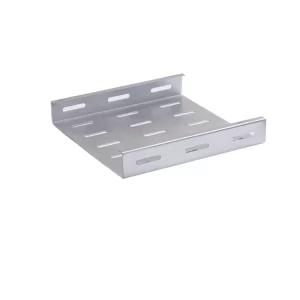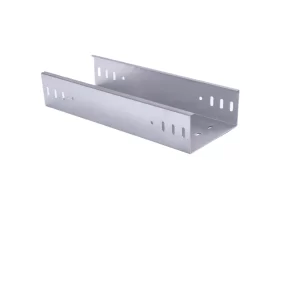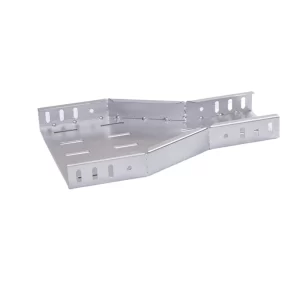Cable tray systems are an essential part of electrical installations, providing a structured and organized way to route and manage cables. There are several different types of cable tray systems available, each with its own unique characteristics and applications. In this article, we will explore the various types of cable tray systems and their features.

Ladder cable trays are one of the most common types of cable tray systems. They consist of two side rails connected by rungs or cross-members, resembling a ladder. Ladder cable trays are available in various materials, including steel, aluminum, and fiberglass.
Advantages of ladder cable trays include:
High strength and durability, capable of supporting heavy cable loads.
Good ventilation, allowing air to circulate around the cables and prevent heat buildup.
Easy access for cable installation and maintenance.
Ladder cable trays are suitable for a wide range of applications, including industrial plants, commercial buildings, and data centers.
2. Solid Bottom Cable Tray
Solid bottom cable trays have a continuous flat bottom instead of rungs. They are typically made of steel or aluminum and are available in different widths and depths.
Advantages of solid bottom cable trays include:
Protects cables from dust, debris, and water.
Provides a more stable surface for cable placement.
Can be used in areas where cable protection is a priority.
Solid bottom cable trays are often used in environments where there is a risk of damage to the cables, such as in chemical plants or outdoor installations.
3. Perforated Cable Tray
Perforated cable trays have a series of small holes or perforations on the bottom and sides. These perforations allow for air circulation and drainage, while still providing support for the cables.
Advantages of perforated cable trays include:
Good ventilation and heat dissipation.
Reduced weight compared to solid bottom trays.
Can be used in areas where moisture or condensation is a concern.
Perforated cable trays are commonly used in data centers, telecommunications facilities, and other applications where cable management and ventilation are important.
4. Trough Cable Tray
Trough cable trays are similar to solid bottom trays but have a U-shaped or trough-like design. They are often used in applications where cables need to be routed in a specific direction or where there is limited space.

Advantages of trough cable trays include:
Can be customized to fit specific installation requirements.
Provides good cable protection and containment.
Easy to install and maintain.
Trough cable trays are commonly used in industrial settings, such as manufacturing plants and oil refineries.
5. Wire Mesh Cable Tray
Wire mesh cable trays are made of welded wire mesh, providing a lightweight and flexible option for cable management. They are available in various sizes and configurations.
Advantages of wire mesh cable trays include:
Excellent ventilation and visibility of cables.
Easy to install and modify.
Can be used in areas where access to cables is required frequently.
Wire mesh cable trays are often used in data centers, server rooms, and other environments where flexibility and ease of access are important.
6. Fiberglass Cable Tray
Fiberglass cable trays are made of reinforced fiberglass, offering a non-metallic option for cable management. They are resistant to corrosion, chemicals, and fire, making them suitable for harsh environments.
Advantages of fiberglass cable trays include:
Lightweight and easy to handle.
Corrosion-resistant and suitable for outdoor or corrosive environments.
Good electrical insulation properties.
Fiberglass cable trays are commonly used in chemical plants, offshore platforms, and other areas where corrosion resistance is a priority.
7. Channel Cable Tray
Channel cable trays are U-shaped channels with a flat bottom and two side flanges. They are typically made of steel or aluminum and are used for routing small to medium-sized cables.
Advantages of channel cable trays include:
Compact design and space-saving.
Can be easily installed on walls or ceilings.
Provides good cable protection.

Channel cable trays are often used in residential and commercial buildings for electrical wiring and cable management.
There are several types of cable tray systems available, each with its own unique features and applications. When choosing a cable tray system, it is important to consider factors such as cable load, installation environment, ventilation requirements, and access needs. By selecting the right type of cable tray system, you can ensure efficient and reliable cable management for your electrical installation.
